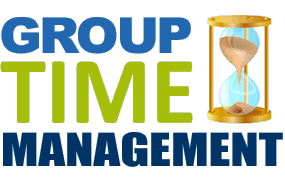Groups, just like individuals, have time management habits and skills. A group’s collective time management skills affect the members of that group in positive and negative ways.
 Groups with a good collective time management culture are effective in the same way that individuals with good time management skills are effective. A good time management culture encourages group members to use their coworker’s time and their own time effectively. These skills include prioritizing, minimizing distractions, and focusing on results.
Groups with a good collective time management culture are effective in the same way that individuals with good time management skills are effective. A good time management culture encourages group members to use their coworker’s time and their own time effectively. These skills include prioritizing, minimizing distractions, and focusing on results.
Maintaining good time management habits as an individual can be more difficult in a group with a bad time management culture that accepts or even encourages constant interruptions. Promoting more effective group habits helps individuals be more productive.
Group Distractions
The most common group distraction is unnecessary or unsuccessful meetings. Hall-jacking coworkers is commonplace for some businesses, while others plan their meetings thoroughly with pre-meeting meetings, or long email chains settling the agenda to the minute.
Agree upon a company standard as to what types of things warrant hall jacking as opposed to what needs to be planned in detail for a meeting, so everyone works consistently in the culture.
Controlling Meetings with Working Agendas
A working agenda is a good way to avoid both under and over-planning meetings and improve a group’s collective time management culture.
As a meeting starts, go around the room to get everyone’s input on what topics should be covered. Write the list on a white board so that everyone can see it. Then, start at the top, and work down.
If someone brings up a topic off the list, stop the conversation and write it out at the bottom of the list. This keeps the meeting on track, let’s the participants know how many topics are left, and shows that everyone’s priorities are important.
Limiting Excessive Emails
If you’ve ever wondered if we would have all been better off without email, the answer is yes. But unfortunately, the cat is out of the bag, so we need to learn how to deal with it.
Just as individuals can use a number of Time Management techniques to control email, groups can set collective time management standards to control the Tsunami as well. Here are 5 quick rules for controlling email.
- If there are more than 4 emails in the chain, pick up the phone.
- If more than 4 people are carbon copied on an email, call a meeting.
- Use bullets if you have more than one request in an email.
- Use 100 words or less.
- Instead of sending 20 update emails a day, add your updates to one draft email, and schedule it to go out at 5:00.
Creating a Good Collective Time Management Culture
The first step in solving any problem, is admitting it exists. Start by building a consensus in the group that there is room for improvement.
Avoid singling out people who struggle more than others. Instead, set standards for the entire group to follow and then apply those standards to their behavior. Along with the email rules above, here are some other examples:
- If only one person in a meeting is talking, it’s an announcement, not a meeting. Write a memo.
- List 3-4 quick questions before knocking on a coworker’s door and interrupting her train of thought.
- Ensure everyone invited to a meeting knows what will be covered, what they need to bring, and why they were invited.
- Make it ok to say, “I’m sorry, but I’m too busy to talk right now.”
- Crack down on being late. It literally saves time.
Culture changes with persistent effort over time. A collective time management class may be a catalyst to begin that change, but it rarely solves the problem completely. Keep up the pressure by bringing it up in staff meetings and circulating time management articles.
See our Time Management Training Class for more information.










